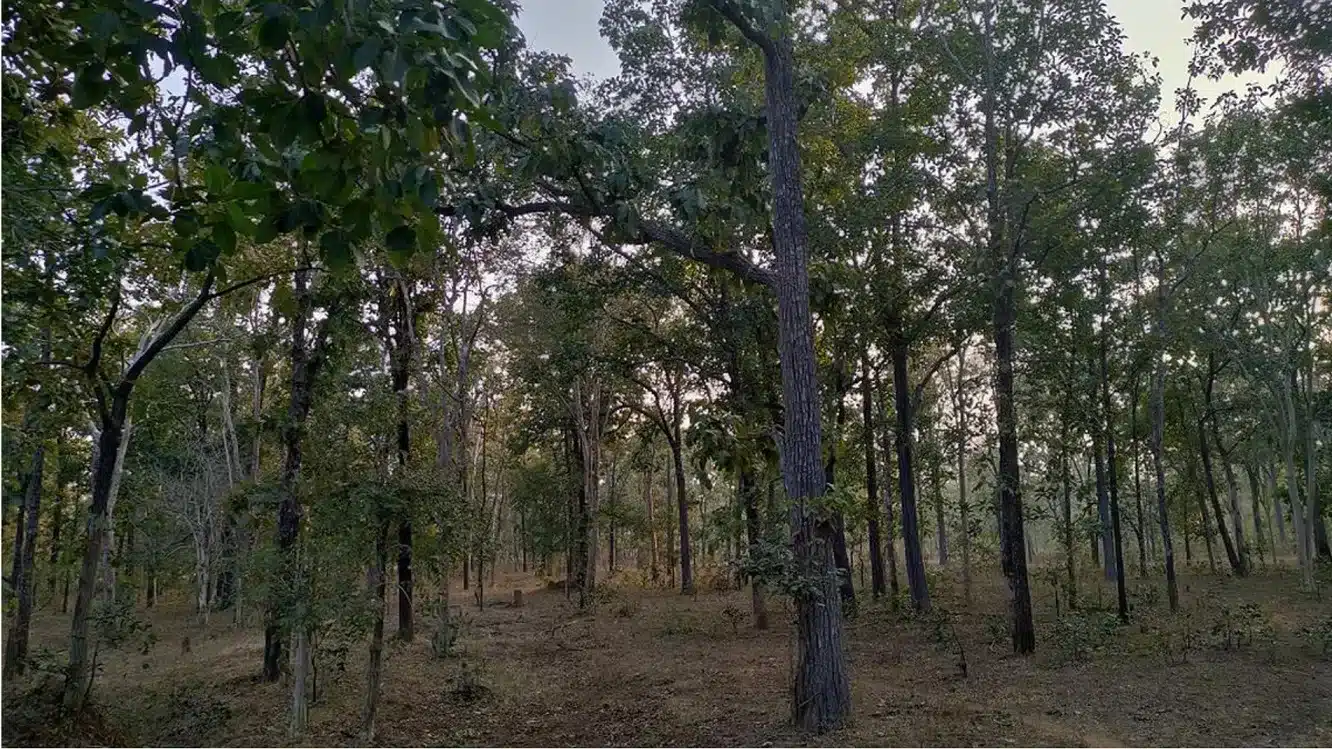What’s in today’s article?
● Why in News?
● What is Kunming-Montreal Global Biodiversity Framework (GBF)?
● Target 3 of the Kunming-Montreal GBF
● What would GBF mean for India?
● What can be done to protect the tribal lands?
Why in News?
Recently, a symposium on the rights of indigenous people organised by the University of Arizona. It focused on how the Global Biodiversity Framework and India’s Forest (Conservation) Amendment Act of 2023 will impact tribes.
What is Kunming-Montreal Global Biodiversity Framework (GBF)?
- About
- This framework was adopted during the 15th meeting of the Conference of the Parties, or COP15, to the UN Convention on Biological Diversity in December 2022.
- It aims to support the achievement of sustainable development goals and build on previous strategic plans.
- It sets a bold path towards global harmony with nature by 2050.
- In adopting the GBF, all parties committee to setting national targets to implement it.
- Goals and targets
- The GBF consists of 23 targets (set for 2030) and four global goals (set for 2050) to preserve biodiversity for current and future generations.
- The targets address reducing threats to biodiversity, meeting people’s needs through sustainable use and benefit-sharing, and tools and solutions for implementation and mainstreaming.
- Legal nature
- The GBF is not an international treaty and is therefore not legally binding on Parties.
- It also doesn’t require a mandatory system that forces parties to step up their efforts at a specific time.
Target 3 of the Kunming-Montreal GBF
- About
- Target 3 of the GBF is to ensure that at least 30% of the world’s land, waters, and seas are conserved by 2030.
- At present, protected areas (PAs) cover about 16%.
- This target is also known as the “30 by 30” target.
- Controversy
- As per analysts, this target seems harmless but often benefit corporations over indigenous communities, especially in Southeast Asia.
- In Indonesia’s Ujungkulon National Park, indigenous people lack basic rights like housing, health, and education.
- Similarly, in Cambodia’s Beng Per Wildlife Sanctuary, an indigenous leader, Heng Saphen, was unfairly convicted for farming on her own land.
- As per analysts, this target seems harmless but often benefit corporations over indigenous communities, especially in Southeast Asia.
- Involving the private sector in forest conservation is a bad idea.
- Analysts pointed out that India has taken a step in this direction with the Forest (Conservation) Amendment Act to 2023.
- The act includes zoos, safaris, ecotourism facilities, etc., as forest activities.
- According to experts, protected areas were first made for leisure and hunting by colonial elites.
- The concept has not changed much. Today, ecotourism projects still treat indigenous people like exhibits, showcasing their traditional culture in staged settings.
What would GBF mean for India?
- About 84% of India’s national parks (89 out of a total of 106) were established in areas inhabited by indigenous peoples and meeting the GBF targets will threaten their existence.
- E.g., the initiative to upgrade the Kumbhalgarh Wildlife Sanctuary in Rajasthan to a tiger reserve will affect 162 tribal villages located inside and outside the sanctuary.
- Similarly, the expansion of the Nauradehi Sanctuary in Madhya Pradesh is set to affect 62 villages of mostly tribal people.
- In Assam, the June 2022, notification for the Barak Bhuban Wildlife Sanctuary will affect the Khasis, Dimasas, and other indigenous groups.
- The gazette notification states that the sanctuary is free from encroachment as per record, there are no rights and concessions of any person in the area.
- However, the Khasis possess documents showing they have been living in the area since 1914.
What can be done to protect the tribal lands?
- A global agreement like the Kunming-Montreal GBF can’t be changed, but India must update its policies.
- Role of tribals as guardians
- It should acknowledge the right to free, prior, and informed consent as per the Panchayats (Extension to Scheduled Areas) Act.
- Additionally, laws should be amended to make tribal communities guardians of protected areas, as they have historically protected nature due to their close ties with forests and wildlife.
- Creation of protected areas in non-tribal areas
- If tiger reserves can be created in areas where there are no tigers such as Sahyadri (Maharashtra), Satkosia (Odisha), Kamlang (Arunachal Pradesh), Kawal (Telangana), and Dampa (Mizoram), there is no reason why PAs cannot be created in non-tribal areas.
- Address human rights violations in the PAs seriously
- India ought to address human rights violations in the PAs seriously.
Human rights issues of these people such as access to education, healthcare, and housing cannot be left to the Wildlife or Forest Department.
Q.1. What is UN Convention on Biological Diversity?
The Convention on Biological Diversity, known informally as the Biodiversity Convention, is a multilateral treaty. The Convention has three main goals: the conservation of biological diversity; the sustainable use of its components; and the fair and equitable sharing of benefits arising from genetic resources.
Q.2. What are Protected areas (PAs)?
Protected areas (PAs) are geographical spaces that are defined, recognized, and managed to preserve nature over the long term. The International Union for Conservation of Nature (IUCN) defines a PA as a space that is designated, regulated, and managed to achieve specific conservation objectives. PAs are also a key tool for managing biodiversity conservation.
Source: Will global forest expansion hit tribals? | Explained
Last updated on August, 2025
→ UPSC Mains Admit Card 2025 will be released soon at www.upsc.gov.in.
→ UPSC Mains 2025 will be conducted on 22nd August 2025.
→ UPSC Notification 2025 was released on 22nd January 2025.
→ UPSC Calendar 2026 is released on 15th May, 2025.
→ UPSC Prelims Question Paper 2025 and Unofficial Prelims Answer Key 2025 are available now.
→ UPSC Prelims Result 2025 is out now for the CSE held on 25 May 2025.
→ The UPSC Vacancy 2025 were released 1129, out of which 979 were for UPSC CSE and remaining 150 are for UPSC IFoS.
→ UPSC Prelims 2026 will be conducted on 24th May, 2026 & UPSC Mains 2026 will be conducted on 21st August 2026.
→ The UPSC Selection Process is of 3 stages-Prelims, Mains and Interview.
→ UPSC Result 2024 is released with latest UPSC Marksheet 2024. Check Now!
→ UPSC Toppers List 2024 is released now. Shakti Dubey is UPSC AIR 1 2024 Topper.
→ Also check Best IAS Coaching in Delhi















